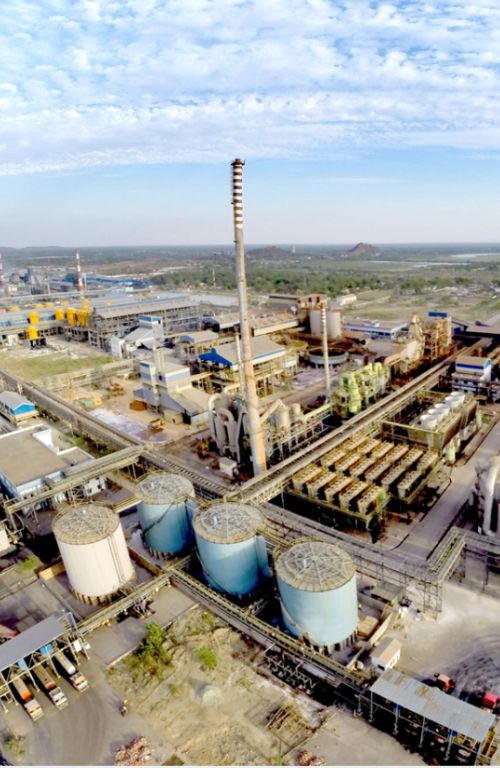While the natural resources industry is one of the major contributors to greenhouse gas emissions, it is also one of the industries that is most exposed to the impacts of climate change. Right from physical assets and infrastructure of the companies to the availability of energy and water, climate change can have multiple impacts on the industry. Difficult geographies and climate amplify the risk further. A recent World Bank study found that changing rainfall patterns and rising temperatures will cost India 2.8% of its GDP and will drag down the living standards of half of
its population by 2050.
Hindustan Zinc acknowledges global concerns on climate change and recognises that concerted and sustained action is required to reduce the scale of the problem and to adapt to its impacts. We have an exclusive Energy and Climate Change Management Policy that helps us achieve a balanced energy-carbon cycle at Hindustan Zinc. We periodically monitor our progress in energy and climate change management and adopt best practices to reduce our energy intensity.
In sync with our Vision 2020, we aim to improve our energy efficiency, reduce our GHG emissions, and intensify our efforts for the captive use of energy from renewable resources (wind, waste heat and solar). In the reporting period, our approach for a lean energy and carbon footprint included the use of energy-efficient equipment and usage of captive solar power generated at our operations.
Energy
Energy use of an organisation is directly related to its productivity, maintenance, safety and environmental performance. Hindustan Zinc has a two-pronged approach to energy management. First is to maximise energy productivity and second, to increase the alternative energy in the energy mix. We periodically monitor progress in energy and climate change management and guide implementation of best practices to maximise our offsets.
Our interventions in this area are aligned with our energy and climate change management policy and standard that helps us to achieve a balanced energy-carbon cycle.
INITIATIVE
Making Profits While Keeping It Cool
Hindustan Zinc replaced compression chillers with vapour absorption machine (VAM) chillers at Dariba Smelting Complex CPP to increase energy efficiency, reduce emissions and the operating costs. VAM chillers use water as the refrigerant and Lithium Bromide (LiBr) solution as the absorbent, eliminating the need of CFC or HCFC refrigerants which have high global warming potential.
It utilises waste heat from the lead plant for cooling purposes and saves 2,000 KwH of energy per day which leads to reduction in operating costs. Also, VAM chillers are vibration free non-rotating equipment and are maintenance free.
UTILISING EXCESS STEAM
AT HZL DARIBA CPP POWER CYCLE








